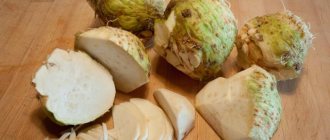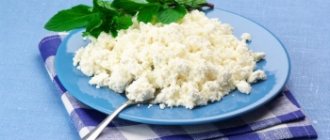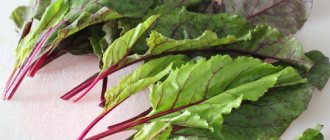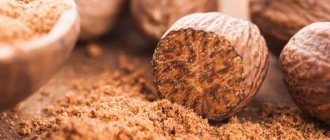The benefits and harm to the body, the healing properties of radish were known to ancient people. All types of root vegetables - black, white, green, red radish - were valued by different peoples. Thus, the Greeks considered this vegetable crop to be the main product on the table, and the ancient Egyptians believed that eating the vegetable brings strength and adds stamina. However, a modern person may be surprised by such an attitude. “What are the benefits of radishes?” – every second resident of the metropolis will grin. You will get the answer to this question by reading about methods of consumption, folk recipes and contraindications for including root vegetables in food.
Description of the vegetable and its variety
Mediterranean countries are considered the plant's homeland. This vegetable of the cabbage family can be oblong, oval, round in shape, its varieties also differ in the color of the root vegetable.
Radish comes in several types:
- black;
- white;
- green;
- red;
- daikon.
The root vegetable is eaten boiled or fried. Radish is also added to vegetable and meat dishes and soups. The beneficial properties of the vegetable make it possible to obtain excellent vitamin-rich salads even from young tops. The product has a bitter, pungent taste and a specific smell.
Unique composition of the vegetable
The benefits of radish have long been known. Due to the high content of valuable elements, it maintains health and improves immunity. The following substances accumulate in its underground part:
- essential oils;
- acids - nicotinic, ascorbic;
- phytoncides;
- amino acids;
- cellulose;
- vitamins B, E, C, PP;
- mineral compounds - sodium, iron, phosphorus, iodine, magnesium, potassium.
The benefit of radish for the body is that it has bactericidal and anti-inflammatory properties. The garden product will easily replenish depleted reserves of vitamins in the winter and spring.
Beneficial features
Both the health benefits and harms of eating vegetables have been studied since ancient times. Eating root vegetables allows you to:
- improve appetite;
- strengthen the body's protective functions;
- get rid of colds faster;
- lower blood pressure;
- saturate the brain with oxygen;
- normalize the flow of bile;
- improve the functioning of the digestive tract;
- remove excess cholesterol;
- prevent constipation.
The low calorie content of the natural product allows it to be included in the diet during diets. The diuretic properties of the vegetable will help remove excess fluid from the body.
The benefit for men from consuming the culture is its positive effect on the genitourinary system and getting rid of prostate problems.
Undoubtedly, the root vegetable has a very beneficial effect on the human body. Therefore, it is worth learning more about the benefits of each type of radish.
Radish: beneficial properties and harm to the body, contraindications and calorie content
Radish has been grown in Russia since the 14th century, and it was brought from the Mediterranean region. Very quickly it became one of the most popular vegetables in Russian everyday life, so during Lent the diet of fasting people included more than a dozen dishes made from it. In ancient books you can even find such exotic recipes as Tsaregrad-style grated radish with honey.
The root crop is well stored without losing its beneficial properties. In early spring, when there are practically no vitamins in food, the benefits of radish as a storehouse of vitamins A, B, C are invaluable.
The beneficial properties of radish are not limited to the content of vitamins; in addition to them, it contains trace elements, glucosides and a large amount of iron, which protects against anemia.
During the long Russian winters and hungry springs, it was the Mediterranean guest who helped preserve the health of many generations of peasants.
And now, in most gardens in the country, radishes are grown, not only black, but also white and green. For medicinal purposes, the black variety of the root vegetable is most often used, while the green and white (daikon) are used in cooking.
How is radish useful and to whom is it harmful?
How and why medicinal root vegetables are used in folk medicine can be learned from ancient herbalists and medical books, and on modern websites. There are many traditional medicine recipes that use grated black radish or its juice.
It can help with the following diseases:
- inflammation of the bile ducts and gallbladder;
- liver diseases;
- swelling of various origins;
- neuralgia;
- radiculitis;
- atherosclerosis;
- bronchitis.
So, for colds, it is recommended to cut a hole in the black radish, fill it with honey (up to 100g), and after the honey has infused and mixed with the juice, use a teaspoon three times a day. Cure from various colds is facilitated by the content of plant phytoncides in the mixture of honey and juice, which help destroy microbes.
The seeds of the plant also have independent use in folk medicine. If crushed and applied to wounds or festering ulcers, they will have an antibacterial effect.
Dietitians know very well how radish is beneficial for the body, and quite often recommend including it in diets. It is clear why nutritionists recommend radish; its calorie content is only 35 calories per 100g of product, while it contains a complex of substances beneficial to the body. You can also note its ability to remove cholesterol from the body.
The male body also needs the beneficial properties of the magical root vegetable. Its benefit for men is expressed in the treatment of problems associated with the genitourinary system, including prostatitis.
Some herbalists write that radish helps maintain male strength longer.
Most likely, these beneficial properties are exaggerated, but herbalists claim that the plant helps men by stopping all inflammatory processes in the genital area and eliminating certain pathologies.
Hypertension and anemia
There is a rather interesting option for using radish for hypertension.
To prepare the product, mix a tablespoon of radish, carrot, horseradish and beet juice with the juice of one lemon. You need to take the mixture three times a day, one teaspoon at a time.
In this case, lemon acts as a natural preservative, thanks to which vegetable juices do not lose their beneficial properties.
The medicinal properties of radish are widely known, due to the content of iron and a number of rare trace elements in it. Also worthy of use is an interesting folk recipe for using black radish for anemia.
You need to squeeze juice out of six radishes and five beets, add a glass of carrot juice. Place the mixture of juices in a closed ceramic container in the oven and simmer for three hours at a temperature not exceeding +60°C.
It takes three months to take this mixture, one tablespoon three times a day.
Black radish: benefits and contraindications
The benefits of black radish are great. The root vegetable has a rich black color, has a specific taste and pleasant aroma. This type of vegetable is considered the most useful, used in cosmetology and folk medicine, and used in cooking.
Useful properties of black radish:
- improves appetite;
- cleanses blood vessels;
- has a general strengthening effect;
- stimulates metabolic processes;
- normalizes intestinal function;
- used as an antitussive and expectorant;
- black radish and its juice destroy parasites;
- relieves swelling;
- promotes the dissolution of gallstones.
Radish juice (usually black) is used to cure painful urination, as a gargle for toothache, and for gynecological problems. Compresses are used to treat rheumatism, bruises and resorption of bruises.
Important!
However, if you experience discomfort in the stomach, increased acidity, enterocolitis, or individual intolerance to the product, you should know that black radish is not your product. In moderation, the root vegetable can be eaten for problems with the gastrointestinal tract.
Recipes based on juice and pulp
For kidney and liver stones
Traditional medicine has long proven the claim that radish dissolves mineral deposits in the kidneys and liver. Our ancestors also emphasized the healing properties of root juice. One of the most common recipes will be given below. It is good because it is not difficult to prepare and does not require a large number of ingredients.
Recipe for making black radish from stones:
- Thoroughly wash the tubers with skins.
- Squeeze out the juice. The resulting cake is not thrown away - it will also be needed.
- Store the juice in the refrigerator in a glass jar. (10 kg radish ~ 3 liters of juice).
- Mix the cake with uncandied honey (300 g of honey per 1 kg of cake).
- Place the pulp in glass jars and crush it as tightly as possible (otherwise mold will form).
Store the pulp at room temperature . If the top layer starts to deteriorate, simply peel it off.
Take one spoonful of juice after meals, gradually increasing the dose to half a glass (adding a tablespoon each time). Use until the medicine runs out.
By this time, the cake will have already soured, so we begin to take the radish with honey. Dosage: from 1 to 3 tablespoons with food . We eat all the cake.
We invite you to watch a video about treating kidneys and liver with radish juice:
For stomach pain
Radish and its juice stimulate the pancreas. And radish essential oils accelerate the secretion of gastric juice and improve blood circulation in the stomach.
Green radish recipe:
- Dilute radish juice with water in a ratio of 1:4.
- We eat it fresh and store it in the refrigerator.
Take 0.5 glasses before meals, gradually increasing the dose to 2 glasses per day.
For heart ailments
Radish is known to lower blood pressure, preventing severe and pressing pain.
Relief of heart pain with black radish juice:
- At the base of the cut off top of the radish, cut a hole.
- Fill halfway with honey (can be replaced with sugar).
- Cover the hole with dough.
- Place the radish on a hot iron sheet or in the oven (for 8-12 hours).
The mixture of juice and honey formed in the cavity is taken 0.5 teaspoon for pain in the heart.
For cough and bronchitis
Radish is an amazing vegetable that instantly destroys foci of infectious disease. It contains the substance lysozyme, which prevents and neutralizes the proliferation of bacteria and fungi. This natural healer also contains glycosides. Thanks to them, harmful microbes simply have no chance of taking over the body.
Cough recipe with black radish:
- Rinse the medium-sized root vegetable thoroughly.
- We remove the top (do not throw it away, it will be a lid) and cut out a recess.
- Put a spoonful of honey there and wait for the juice to release.
- Cover with a lid and leave overnight 12 hours before.
Drink syrup three times a day (until complete recovery).
Dosage: teaspoon.
Important! Add honey to a cup before bed. Remember that radishes quickly lose vitamins and nutrients. The shelf life of one cup of syrup is three days.
We invite you to watch a video about the treatment of bronchitis with black radish:
Green radish: beneficial properties and harm
Green radish is not often found in markets and stores. The composition of this species is similar to the black root vegetable, but the taste is milder and vaguely resembles radishes. The plant has several varieties: green, Chinese, watermelon, Margelan radish.
This type of root vegetable performs the following functions:
- strengthens the immune system;
- cleanses the body of bile;
- due to the content of calcium and iron, it improves the condition of teeth and bones;
- suitable for weight loss;
- improves the functioning of the digestive system;
- normalizes blood sugar levels;
- relieves colds.
Green radish also improves appetite, improves vision, and helps with diseases of the nervous system. It helps remove harmful compounds, vegetable juice treats hair loss and baldness, compresses are used for radiculitis, gout and joint problems. When consumed regularly, Margelan radish reduces cholesterol levels.
Contraindications for including green root vegetables in the menu are the same as for the previous type. However, due to the lower content of phytoncides in certain diseases of the gastrointestinal tract, its use in food is acceptable, while black radish is contraindicated in such cases.
A root vegetable equivalent to gold: what are the benefits of an ordinary radish for the body?
Nowadays, radish is included in the diet of few people. Although in fact this unique root vegetable is quite healthy, and has been used as food and medicine for many centuries. She is more valuable than she may seem, and we will prove it.
The overcrowding of the food market with processed products has led to a gradual loss of popularity of the vegetable. Residents of the metropolis rarely see radishes, much less consume them. Thanks to exquisite restaurant recipes, only daikon is popular. In ancient times, from Ancient Egypt to Kievan Rus, radish was an integral part of the diet.
In difficult times, the inhabitants of Kievan Rus were saved only thanks to the radish, so you should not take the vegetable for granted. It has a complex effect on the body and is a popular product in narrow circles. For example, it can be found in many weight loss diets. The vegetable is also actively used in traditional medicine.
Composition of radish
The vegetable has excellent nutritional properties, so it can be used as a main dish. It also contains a lot of vitamins and minerals, which has a positive effect on human health. The most useful substances in radish include:
- Vitamin A . Strengthens bone tissue. Positively affects vision.
- B vitamins. Normalize metabolism in the body. Strengthens the nervous system.
- Vitamin C. Significantly strengthens the immune system. Eliminates free radicals.
- Vitamin RR. Positively affects tissue growth. Accelerates the breakdown of fats.
- Alimentary fiber. They have a positive effect on the digestive system and strengthen the intestinal walls. Remove harmful substances from the body.
- Lysozyme. Antiseptic. Eliminates pathogenic microorganisms.
- Pantothenic acid. Strengthens the immune system. Restores damaged nerve cells. Participates in the synthesis of cortisol. Promotes the formation of blood cells.
- Phytoncides. Suppresses the growth and development of bacteria, fungi and protozoa. Fight free radicals.
- Glucosinolates. Suppresses the development of malignant neoplasms.
- Amino acids. Accelerates the breakdown of fats. Strengthens the nervous system. React with vitamins, enhancing the positive effect.
- Tannins. Anti-inflammatory properties. They are a preventive measure against many diseases.
- Vital minerals : potassium, calcium, magnesium, phosphorus, iodine, iron.
- Essential oils. They tone the body. Strengthen the immune system.
What accounts for the popularity of radish in different diets?
The first factor that determines the benefits of the root vegetable is its rich chemical composition. In addition, the product has extremely low calorie content. For 100 g of raw radish there is:
- 34-36 kcal;
- 1.9 g protein;
- 7 g carbohydrates;
- 0 g fat;
- 86-88 mg water.
Radish has a glycemic index of only 15, making it ideal for people looking to lose weight.
What are the benefits of radish
The rich chemical composition determined the complex effect on the body. That is, the root vegetable has a positive effect on several human organ systems. Thus, the product can be used both as prevention and for treatment. Let us note the main medicinal properties of radish.
Immunity
Vitamins C and PP, minerals, amino acids and phytoncides determine the powerful effect of the root vegetable on the body’s immune system. The product contains 29 mg of vitamin C, so eating with vegetables will significantly increase the protective function and protect against colds.
The most useful is black radish. This species survives the whole winter without any problems, which is quite enough to maintain strong immunity during seasons of epidemics of viral and microbial diseases. Black radish will help get rid of bronchitis and other diseases accompanied by a severe cough.
Nervous system
100 g of radish contains more than 0.3 mg of vitamins B1, B2, B5, B6. This is more than enough to strengthen and calm the nervous system, which is why radish is an anti-stress remedy.
Salads and other dishes containing root vegetables relieve stress, anxiety and neurosis. A strong nervous system is an integral part of a healthy human body.
People suffering from insomnia simply must stock up on radishes.
Gastrointestinal tract
The vegetable also contains fiber in large quantities. Therefore, it can be safely used for any problems with stool. The product normalizes digestion and has a positive effect on the intestines and stomach.
Black and white radishes are not recommended for consumption by people suffering from various diseases of the digestive system with high acidity. Contraindications may include gastritis, ulcers, pancreatitis and other diseases. Radish also affects the acid-base balance of the body, especially if the diet also contains meat and dairy products.
The cardiovascular system
Radish has one property that can significantly prolong life if you eat improperly. Animal fats contribute to increased levels of lipids in the blood, which can trigger atherosclerosis.
The disease is a blockage of blood vessels with cholesterol plaques. People suffering from this disease live 10 years less on average. Therefore, if you are a lover of non-dietary meat, you should definitely start eating radish.
Leather
The antibacterial properties of the root vegetable allow it to improve skin condition. A set of antiseptic substances and vitamins makes the skin clean and healthy. Eating radish helps get rid of acne, pimples and blackheads. The skin itself acquires a healthy color, becomes toned and smooth. The functioning of the sebaceous glands is normalized, so the person begins to sweat less.
Liver
The juice of the root vegetable has choleretic properties, therefore it cleanses the ducts of the gallbladder and liver. The product takes on its share of cleansing the body of toxins, so the liver is not overloaded with a large amount of toxic substances. Radish is often used in the fight against cholecystitis and gallstone disease.
Cleansing the body
The cleansing effect of radish is simply irreplaceable thanks to its fiber and phenolic compounds. The first component removes waste and toxins from the body, which allows for overall improved health. The functioning of the organ system is improved, the load on the liver is reduced.
The second component destroys various harmful microorganisms, including bacteria, viruses, and fungi. The product is effective even against staphylococcus, diphtheria and streptococcus. Therefore, regular consumption of radish will protect you from serious diseases and cleanse the body of metabolic products.
Overweight
One of the best foods in the fight against excess weight is radish. The product can be included in your diet, which will not only help you lose weight faster, but also keep your body healthy without loss of strength. Zero fat content, a large amount of B vitamins and minerals, as well as dietary fiber determine the high benefits of the product for weight loss.
The low glycemic index allows people suffering from diabetes to eat radish. In addition, the root vegetable activates metabolism and the breakdown of fats. Therefore, this is the best option for losing weight.
Wound treatment
Antiseptic, anti-inflammatory and wound-healing properties make radish juice an effective remedy against open wounds. To do this, use gauze soaked in freshly squeezed juice. This gauze is applied to an open wound, which will promote rapid healing of the cut.
Beneficial properties of radish for men's health
It's no secret that men suffer from hangovers more often than women. Even just because they drink more. Therefore, we recommend that men eat radish in case of a hangover. A light vegetable salad with root vegetables will quickly relieve headaches and a feeling of heaviness.
Beneficial properties of radish for women's health
The positive effect of the product on the skin allows you to maintain youth and beauty longer. By regularly consuming radish, you prevent early wrinkles, making your skin smooth and elastic.
In addition, vegetable juice strengthens hair and promotes uniform growth and shine of nails. Radish normalizes a girl’s menstrual cycle and is a prevention of some intimate diseases. The product also has a positive effect on the pelvic and abdominal organs.
Beneficial properties of radish during pregnancy and breastfeeding
For pregnant women and nursing mothers, radish can be both beneficial and dangerous at the same time. On the one hand, the root vegetable allows you to maintain normal weight, which is important for bearing a healthy child. Radish also resolves swelling, so it is extremely useful in the last trimester of pregnancy.
But on the other hand, anti-cough remedies based on radish can increase the tone of the uterus, which is extremely dangerous for the fetus. Therefore, it is recommended to discuss the use of radish with your doctor. Constant monitoring of the pregnant woman's health is extremely important.
When feeding a baby, radish can increase lactation. For this, a drink based on radish is used. 50 ml of freshly squeezed juice is mixed with 150 g of water and a teaspoon of honey is added. Drink the drink twice a day for 10 minutes. before feeding.
Contraindications to the use of radish
The acids contained in radish can negatively affect the health of a person suffering from gastrointestinal problems. They are the first contraindication to eating root vegetables. If you have serious kidney and liver problems, eating radish can also be harmful.
It is also prohibited to use radish if:
- enterocolitis;
- gout;
- previous myocardial infarction;
- individual intolerance to certain substances in radish.
If you decide to include radish in your diet in order to strengthen the body or normalize weight, the result will not be long in coming. But before you do this, be sure to ask about contraindications and consult a doctor to get only benefits from its consumption.
Source: https://enot.fun/korneplod-ravnotsennyj-zolotu-chem-polezna-obyknovennaya-redka-dlya-organizma/
Which root vegetable is healthier?
After describing the varieties of vegetable crops, you can summarize and decide how each type of radish is different and useful.
- Black radish is pungent and bitter, but has the most valuable qualities. Suitable only for people without stomach problems.
- White radish is best for salads. It boosts immunity, fights colds and destroys infections.
- Green radish is spicy, but practically not bitter. Can be consumed by almost all categories of people, except those who are obese.
Each type of valuable root has its own characteristics and valuable qualities.
Radish with honey
The underground part of black radish is truly a unique resource for the body. The root vegetable has a general strengthening and immunostimulating effect; its consumption has a beneficial effect on the treatment of bronchitis, laryngitis, coughs, colds and problems of the upper respiratory tract. Also, radish with honey is famous for its antimicrobial and anti-inflammatory effect.
There are various recipes for preparing a folk remedy for cough based on a bitter vegetable. Here are two of the most popular ones.
- Cut off the top of the root vegetable, cut out the middle. Add honey to the resulting void and cover with the cut part for 24 hours. During this time, radish with honey will give medicinal juice, which should be taken 1 tsp. at night, in advanced cases it is allowed to increase up to three doses.
- Peel the vegetable, cut into small pieces and pour in about 100-120 ml of honey. Let it brew for at least two hours in a warm place. Then the radish with honey is squeezed out. It is recommended to drink the resulting juice in the same way as with the first preparation method.
The parallel use of black radish is effective for a speedy recovery in the form of a compress on the chest. To do this, you need to grate the root vegetable, wrap it in thick cloth and apply it for 15 minutes.
Radish juice
It has long been known that ordinary radish juice for men, women and even children can be a real salvation for health problems. This is a natural remedy for many ailments:
- colds;
- cough;
- tracheitis, lung diseases, bronchitis;
- ulcers, purulent wounds, abscesses, eczema.
Adherents of traditional medicine promise that natural medicine will help cope with respiratory problems. It is useful for the human body: it removes mucus and improves the expectoration process.
For skin diseases, compresses and lotions made from garden products relieve the inflammatory process from damaged areas and speed up the healing process. The pronounced bactericidal properties of the plant allow it to be used as an antiseptic and to treat problem areas of the skin.
Radish juice also has the ability to normalize metabolism, treat atherosclerosis, and improve digestion.
What are the benefits of radish - green, black and white - for the human body?
The famous root vegetable called radish came to our region from Mediterranean countries. Residents of Ancient Rus' often grew it and ate it.
What are the benefits of radish for men, women and children? The vegetable was highly valued not only for its pleasant taste, it helped to recover from various ailments and provided the body with a huge amount of micronutrients.
Various lean but satisfying dishes were prepared from the root vegetable.
Radish belongs to plants of the cabbage family. It is grown in oblong, round, oval shape. Today, white, green, black, red (radish), radish, and daikon are often grown.
The fruit itself is consumed; salads and soups are prepared from its young tops. The useful plant is used boiled, fried, and added to vegetable and meat dishes.
Radish is a healthy root vegetable, but there are several contraindications to its use. The plant should not be eaten if:
- the presence of gastritis, ulcers;
- disorders of the cardiovascular system;
- kidney and liver diseases.
Green radishes are not often found in stores and markets, but they are worth finding and purchasing. The most famous varieties of this root vegetable: watermelon, Margelan radish (Chinese).
The green vegetable contains a large amount of nutrients.
What vitamins are in radishes? The Chinese root vegetable is rich in vitamins A and B, which strengthen the visual and nervous systems and are responsible for improving metabolism in the body. Green radish performs the following functions:
- a boiled or fried vegetable acts as a kind of catalyst for the digestive process;
- helps strengthen the immune system due to the fact that the green root vegetable contains calcium, potassium, and phosphorus salts;
- significantly improves teeth and human bones due to calcium and iron;
- The calorie content of green radish is low, so the vegetable is great for weight loss;
- cleanses the body of bile well;
- improves the functioning of the stomach and the entire digestive system;
- stabilizes blood sugar;
- helps cleanse the body of toxins and waste;
- often used for colds and infectious diseases.
Black
Black radish, as seen in the photo, differs from other varieties in its rich, unusual color. This is not the only feature of this cultivated plant. The root vegetable has a slightly specific but pleasant taste. In addition, it is no less useful than green radish.
Organic acids, mineral salts, enzymes, and phytoncides “live” in the culture with a black peel and aromatic core. A plant of this type is recommended for use in folk therapy because it is very rich in potassium, sodium, phosphorus, iron and other benefits.
Black radish has many benefits:
- responsible for normal bowel function;
- strengthens the immune system and the body as a whole;
- black radish is an excellent remedy against bronchitis;
- relieves a person from edema by removing excess fluid from the body;
- often plays the role of an effective drug for the prevention/treatment of atherosclerosis;
- Black radish oil improves appetite and stimulates the digestive process.
White
A storehouse of vitamins plus a juicy, pleasant taste - this is white radish.
This nutritious vegetable contains sodium and potassium salts, fiber, beneficial vitamins C, B1, B2, essential oils, calcium, magnesium, phosphorus, amino acids and many other equally useful substances.
Many adherents of traditional medicine advise using white radish for preventive measures and treatment of digestive system problems. The main qualities of this cultivated plant are:
- increased appetite;
- eliminating problems with the intestinal system;
- eating white root vegetables is an effective fight against constipation;
- treatment of chronic reduction of the lumen of blood arteries (atherosclerosis), cholelithiasis;
- healing of skin damage;
- normalization of the functioning of the liver, kidneys, gall bladder, stomach;
- white radish is responsible for “smooth” carbohydrate, protein, and fat metabolism in the body.
Daikon
Another famous and tasty variety of cultivated root vegetable is Daikon (Japanese radish). The long-shaped white vegetable is constantly used by culinary specialists and for the preparation of traditional medicine.
Daikon has a considerable supply of nutrients: magnesium salts, potassium, phosphorus, iron, and also contains beta-carotene, many vitamins C and B.
The nutrients of this radish variety make it possible to:
- effectively resist the appearance and proliferation of bacteria, reliably protect it from various infections;
- free the human body from toxins, waste, free radicals, heavy metals;
- thoroughly cleanse the kidneys, liver, dissolve stones in these organs;
- improve overall health and restore strong immunity.
Red
Red radish is useful in the same way as previous varieties of cultivated vegetables. This type of root vegetable is rich in a huge amount of vitamins, minerals, contains essential oils, salts, coarse fiber, and so on. The main functions of red radish are:
- treatment of various diseases;
- relief from constipation and other intestinal problems;
- improved digestion;
- used for the treatment of certain pathologies of the kidneys, liver, and gall bladder;
- quickly rids the body of excess fluid;
- significantly strengthens the body's defense mechanisms;
- supplies all organs with all necessary nutrients;
- Recommended for consumption in the presence of anemia.
Many people wonder how different varieties of radish are useful for a child or a pregnant woman? Is it worth eating this vegetable when the child’s body is not yet strong or weakened by bearing a baby? Often, radishes of any variety are recommended to be eaten even by a child, especially for therapeutic and prophylactic purposes. Find out more detailed answers in the continuation of the article.
For children
A child over 5 years old is not prohibited from eating a little white, red or green radish. Vitamins are simply necessary for a growing body. For therapeutic purposes, doctors sometimes advise parents to purchase a certain type of vegetable (black root vegetable). This folk remedy gives a chance to gently get rid of colds and phlegm in the lungs, creating a powerful expectorant effect.
Treatment of cough with radish in children is carried out according to two main recipes, for which honey is useful. You can do this: cut off the top part of the root vegetable, take out the inside, putting a few spoons of honey there.
The bee product will “squeeze” the juice out of the vegetable, which is what we need for home antitussive therapy. The second way to extract juice: cut the radish into pieces, pour honey. The medicine can be given to children one teaspoon (5 milligrams) six times a day.
Important: you need to check in advance whether the child has an allergic reaction to honey.
During pregnancy
How are different radishes useful for a pregnant woman? Eating dishes prepared from this plant compensates for the lack of vitamins, microelements and other substances that the female body gives to the growing fetus. During pregnancy, radish is recommended for consumption while carrying a baby, but you need to eat it as carefully as possible, so to speak, without fanaticism.
This vegetable contains a lot of essential oils, and they can negatively affect a woman’s condition (for example, increase uterine tone). If the expectant mother feels great and the pregnancy proceeds without problems, then a small amount of radish will not hurt. When the doctor identifies complications or a threat of interruption, it is better to abandon the root vegetable until childbirth and the end of the lactation period.
about black radish with cough honey
Source: https://sovets.net/5743-chem-polezna-redka.html










